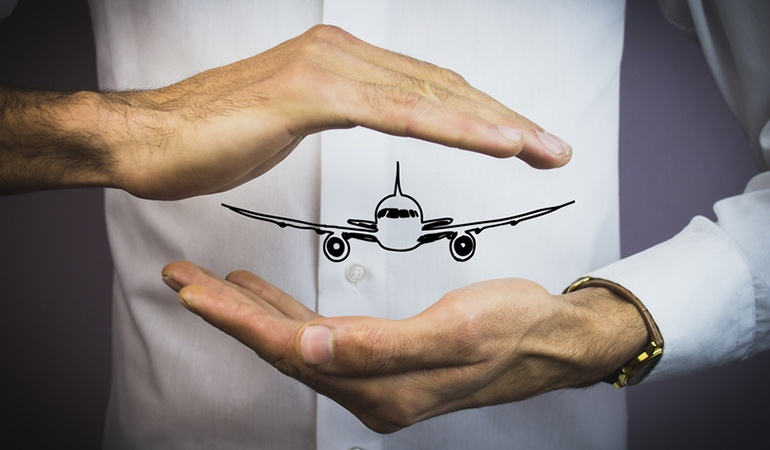You own a house, you drive a car – and you probably have insurance for both of them. Just as you can scratch your mudguard while parking or get bumped into at a traffic light, an aircraft can also get into smaller or bigger accidents. However since planes are way bigger than cars, the damage can easily be vast. It’s good to try and avoid such situations, but it’s better to have the right aircraft insurance. Here’s an overview.
Understanding aircraft insurance: One for all or all for one?
Unlike a vehicle insurance, it’s hard to cover all aspects of aviation with a single insurance. Many insurance companies even provide different insurances for different situations, for example depending on whether the plane is flying or on the ground. There are providers that offer packages which include many different insurances, though. Let’s take a closer look.
Aircraft liability insurance: On the plane vs. outside the plane
In aviation there are many things and people involved that can or even should be covered by insurance:
- the passengers, personnel and cargo on the plane
- facilities, personnel and machines on the ground including hangars, aircraft tugs, flight controllers and many more
- in case of an emergency landing or a crash literally anything that a plane could land or crash onto
- networks, channels of communication, systems, software and other non-physical devices
- and eventually the aircraft itself
How can these people and objects be protected?
5 basic types of aviation insurance
There are roughly five different types of aviation insurance, that are taken out individually or in combination.
1. Public liability insurance
Simply put, the public liability insurance covers anything that can be damaged by a plane. This also includes for example ground support equipment and airport facilities such as hangars. The plane itself or anything or anyone that is inside it isn’t covered, though. Therefore you might sometimes hear people refer to it as third party liability. In most countries public liability insurance is mandatory.
2. Passenger liability insurance
Since the passengers on a plane aren’t covered by the typical public liability insurance this insurance protects (mortally) injured people aboard. Not every plane in the sky is carrying passengers, so this insurance is usually only mandatory for commercial aircraft. Public liability insurance and passenger liability insurance are sometimes combined in a so called CSL (Combined Single Limit). This type of insurance covers all types of liability claims for individual accidents, including for example cargo legal liability.
Aviation insurance can be pretty costly.The “Flying” magazine has some good tips, how to save money on aviation insurance. Check them out!
So far we have covered third party’s property and passengers inside the plane – but what about the plane itself? That’s what the last three insurances are about.
3. Ground risk hull insurance not in motion
There are usually three possible situations a plane can be in: Either it flies, it rolls on the ground or it stands on the ground (take-off and landing are considered flying, too). This first coverage protects the aircraft when it is standing still and presumably incapable of causing self-inflicted damage. Damages caused by natural hazards and disasters like floods, fires, storms or collapsing hangars are just as covered by this insurance as accidents with uninsured vehicles or other planes.
4. Ground risk hull insurance in motion
On the ground aircrafts are gentle giants. Still, parking, driving to the gate or being towed by an aircraft tug can lead to minor or even major accidents. That’s where the ground risk hull insurance in motion comes in. Although the name implies it, this coverage protects of course not only the hull but the whole plane against physical damage.
5. In-flight insurance
Compared to the last two, the in-flight insurance is an allrounder. It covers not only any damage that might occur in-flight but also in every other situation on the ground – whether in motion or not. That makes it very practical but also more expensive than only the non-in-motion insurance.
Are you searching for an aviation insurance right now? Sites like Thirty Thousand Feet or GlobalAir.com provide you with lists of insurance companies from around the globe.
Conclusion
In addition to these five basic types of aviation insurance, insurance companies offer many different possibilities to find individual solutions for both private aviators and commercial aviation. Aircrafts aren’t the only objects of value when it comes to aviation after all. Therefore there are special insurances for hangars, airports, ground support equipment, maintenance facilities, avionics and many more. Let your aviation insurance broker help you find the perfect insurance for you.
You want even more updates on hangar safety and other important topics of aviation and ground handling? Subscribe to our blog today and stay informed!


Comments